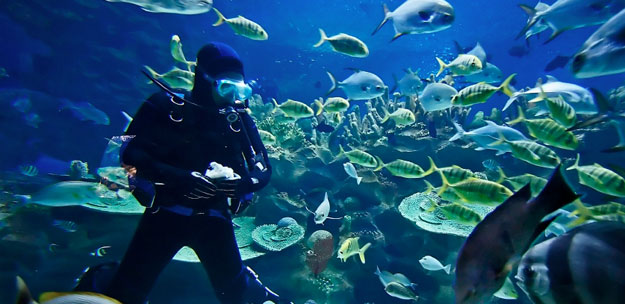* This is a guest blog post by Johnny Brynelsen
With my father only diving occasionally, and my mother’s resistance to my passion, getting to those not-so-local spots was a rare and cherished occurrence. I dove the six or seven local dive spots continuously, summer after summer. Those that teach diving have probably at some point felt burnt out by the normal beginner spot, therefore it only seems reasonable that the desire to dive at that location fades as time goes on.
Now, at a still young age of eighteen, I have certainly broken down some of the boundaries that I, at one time, felt restricted my desires. I have a drivers licence now, so I do not rely on the dive shops regular trips, and I have a lot more freedom to go diving with friends, versus with a Divemaster, which was a rule (put in place by my reluctant mother) that proved to become mute, as I began studying to take my Divemasters licence.

But as time went on, and my diving expanded and I began to become more experienced in the more exotic dive sites. I have dove countless times in Mexico, and all the way up to Northern British Columbia. It seems each time I returned home I would have a regained desire to dive in those local spots. I couldn’t figure it out, I had just been in a world class diver’s oasis, the tropical blue ocean of Mexico, yet I still wanted to dive in the spot that I knew like the back of my hand. What was this desire to go back up the Sechelt Inlet and dive Pipers Point for the umpteenth time?
Well, nonetheless, I took my confused brain down to the dive shop, filled up my tanks and drove out there with a couple of diver friends. Of course, with my stubbornness, I complained throughout the drive that I knew everything at the site and that it just wasn’t exciting anymore. My friend disagreed and he discussed a micro-life course that he had been taking in biology. He encouraged us to slow down and at the smaller animals in the water. He said that you will be introduced to an entire new dive site as you take a look. He further explained that because micro-life is ever-changing we will meet new animals each time we dive a site. Skeptical, I agreed to take the dive slower and cover less ground.
Well, unfortunately, my friend couldn’t have been more right and I was forced to admit that I had had an amazing dive, despite the complaining that had been present during the drive to the site. I had met a baby pacific octopus (which had actually inked on my glove as it danced across my hand), three sea horses, beautiful little algae growths that had presented themselves in the cracks on the walls and even, a first for me, watched a wolf eel protecting it’s child. It was a wonderful dive, and, as my friend explained something that I would be able to experience each time I dove there as micro-life was never static.
I was exultant, as I had experienced a whole new way to dive. So, I encourage you to take this story and use it in your own dive life. As some of us become stuck in the same old dive spots weekend after weekend, take your next dive slow. Really look for the little pieces of nature that are ever-too-often overpassed by divers excited to check out that giant pacific octopus or wolf eel that you have seen twenty times already. Take it slow, sacrifice one viewing of the octopus and take a moment to breathe on your dives. Enjoy the environment that you are fortunate enough to be in and admire the plankton. You will thank yourself for it later.

